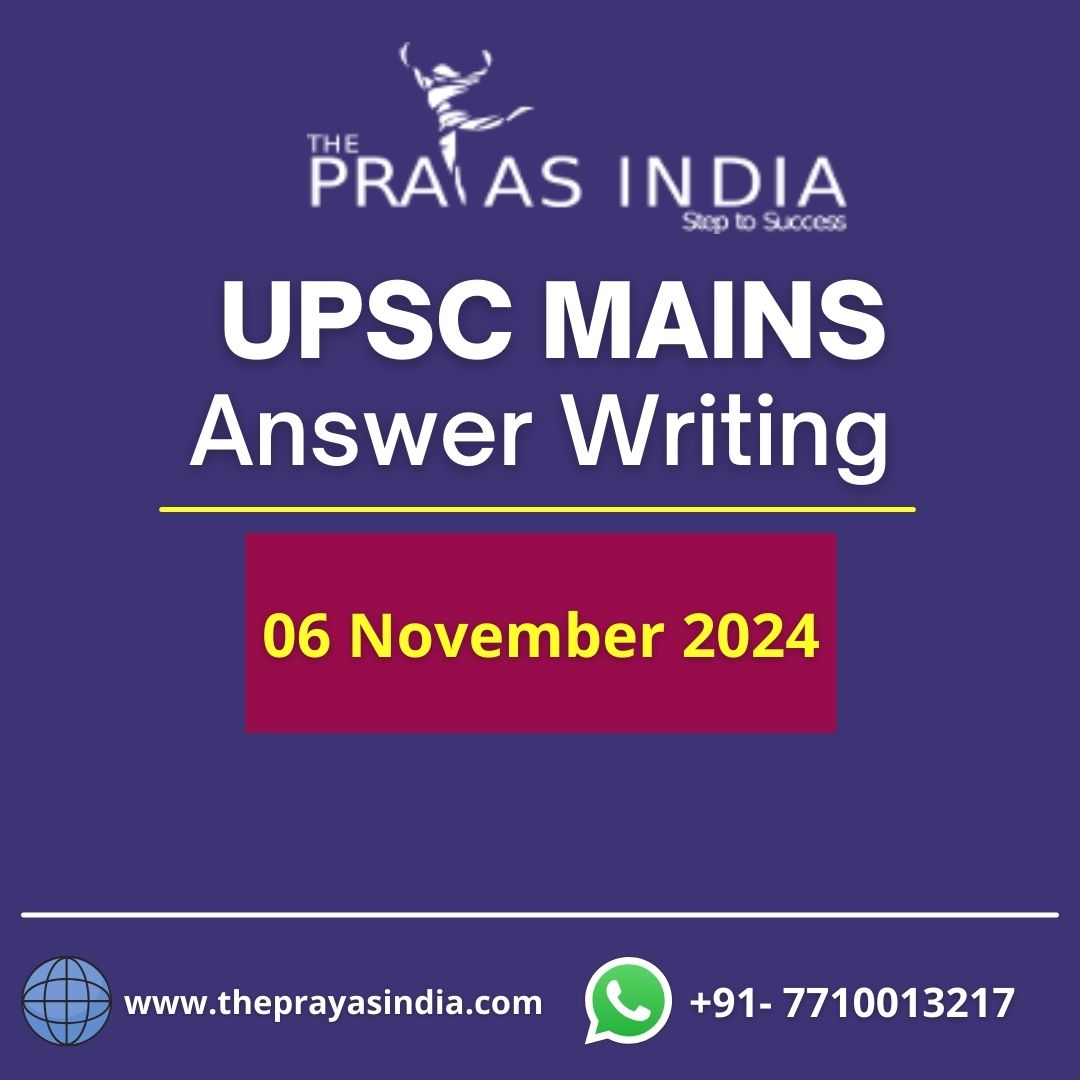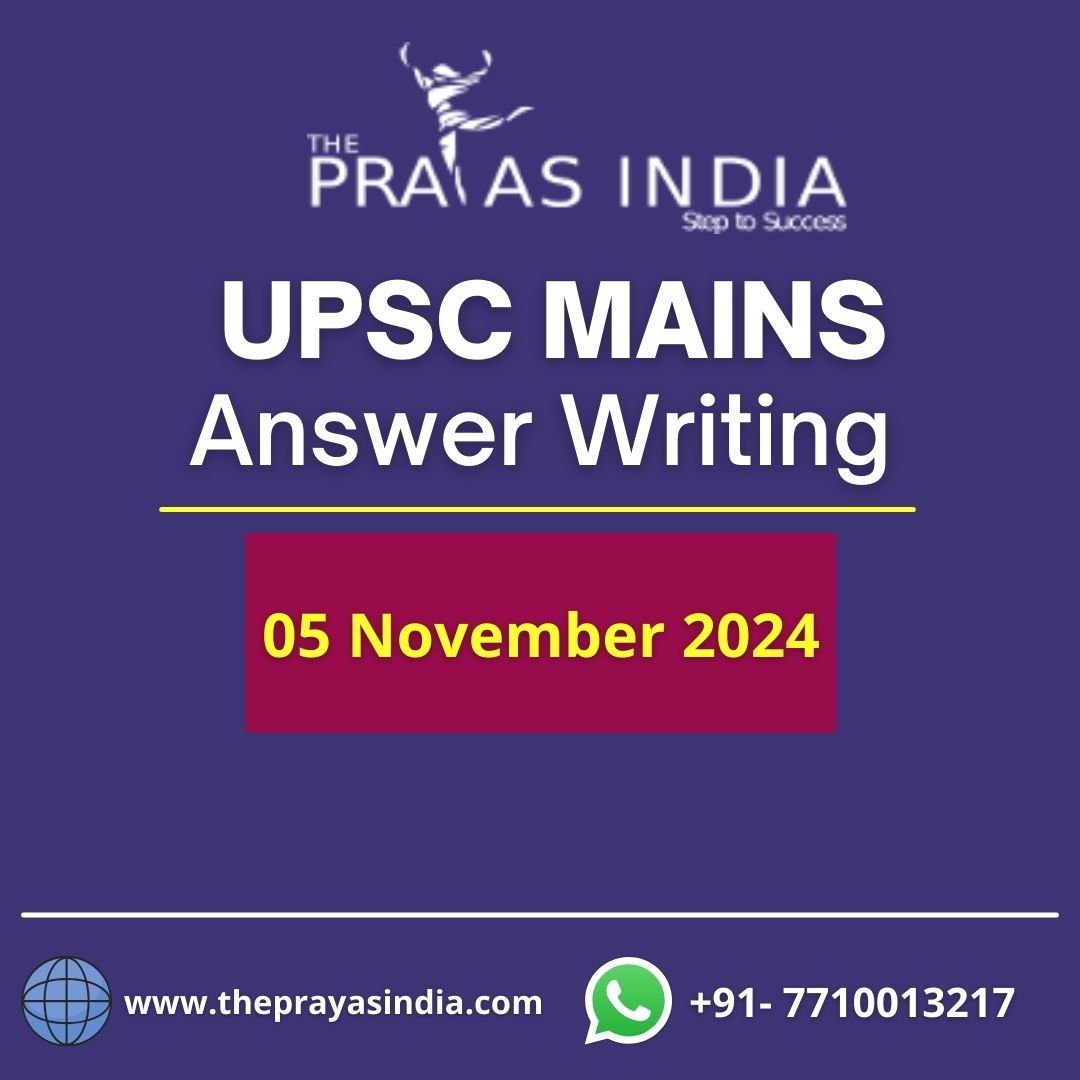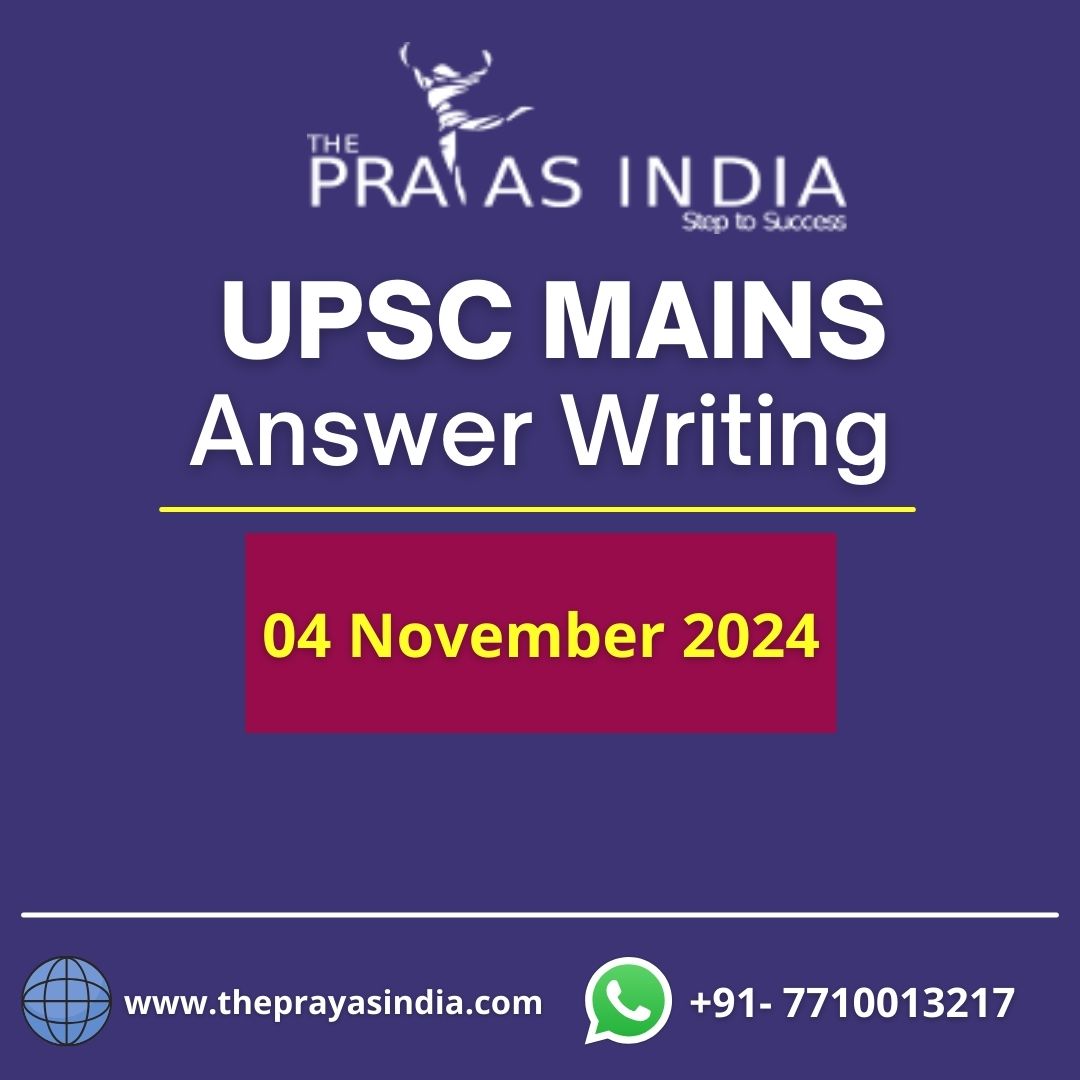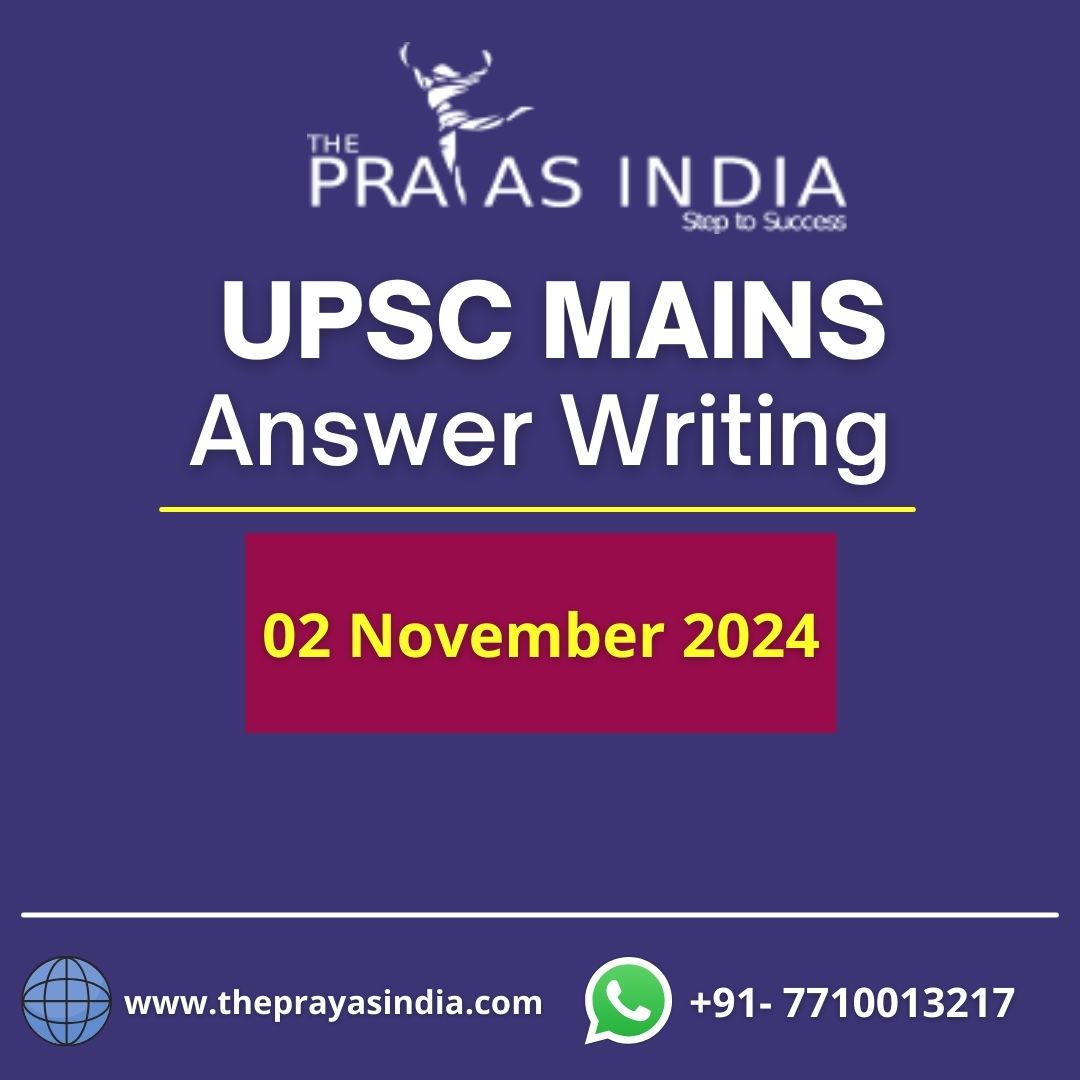DAILY QUESTIONS & MODEL ANSWERS
Q1. Price stability is a crucial requirement for sustainable growth. How does India’s monetary policy balance maintaining price stability with pursuing economic growth? (250 Words)
Paper & Topic: GS III – Indian Economy
Model Answer:
Introduction:
- The Russian invasion of Ukraine puts the Reserve Bank of India’s inflation forecasts in peril. Since retail inflation is anticipated to grow as a result of the sharp increase in crude oil prices, the RBI stands the danger of falling behind the curve in managing inflation given its accommodative policy stance, which has so far included abundant liquidity in the financial system and low interest rates.
Body:
Price stability is a key requirement for sustainable growth:
- An economy can prevent both extreme inflation and extreme deflation by maintaining a stable price environment.
This has a number of significant benefits:
- increases the transparency of prices. When prices are stable, consumers can recognise relative price changes without being confused by overall price fluctuations.
- Making intelligent decisions when they invest and consume is required for this.
- Prevents wealth from being allocated arbitrarily instead of in accordance with necessity or merit: When unexpected inflation happens, wealth is dispersed randomly rather than according to these criteria. For instance, as prices grow at varying rates for various items, certain businesses are penalised more than others, and as inflation rises, debtors profit while creditors receive lesser loan payments than they would have otherwise.
- Price stability stops this arbitrary wealth redistribution.
- reduces risk premia: A risk premium is the minimal rate of return a client needs get to keep a risky asset as compared to a risk-free one.
- Consumers are less likely to make risky investments when risk premia are high, which slows economic growth.
- Low risk premiums lead to lower real interest rates and more confident investment decisions from customers, which helps the economy.
- Strong economic confidence: Good pricing stability has an impact on a variety of factors, such as the country’s investment climate, corporate borrowing trends, the assurance of an adequate supply of inputs to industries, and the price of agricultural products.
Monetary policy is used to ensure price stability:
- The benchmark policy interest rate (repo rate), which is established by the Reserve Bank of India’s Monetary Policy Committee (MPC), is responsible for ensuring that inflation stays within the specified target level.
- Controlling inflation is a valid objective of economic policy given the connection between inflation and macroeconomic stability.
- The RBI’s monetary policy has as its main objective maintaining price stability while keeping growth in mind.
- Monetary policy entails altering the amount of money in circulation and the interest rate in order to maintain the economy’s stability at full employment or potential production levels. This is accomplished by modifying aggregate demand.
- Changes in repo rates have an impact on aggregate demand, a key driver of inflation and growth, by resonating through the money market to the whole financial system.
- More specifically, monetary policy involves the deployment of specific financial instruments during recessions that have a tendency to increase the money supply and decrease interest rates in order to increase the economy’s aggregate demand.
- Monetary policy aims to lower total spending during inflationary periods by limiting the money supply or raising interest rates.
Conclusion:
- Price stability promotes economic growth, financial stability, and low inflation rates in a country. Growth need not always be a “secondary” objective. Given that India has only been experimenting with the inflation targeting framework for five years while going through a tumultuous inflationary phase, a feeling of stability is crucial. The range and target must be reevaluated independently, without any biases towards inflation or growth, nevertheless.
Q2. What exactly do you mean when you say “hybrid warfare”? Describe the steps that should be taken to stop this kind of international hostility. (250 Words)
Paper & Topic: GS III – Internal Security
Model Answer:
Introduction:
- The term “hybrid warfare,” sometimes known as “5th generation warfare,” describes the use of unorthodox techniques in a multi-domain warfighting strategy. In hybrid warfare, non-military tactics are used in addition to conventional military tactics to seize power, do harm, undermine, or exert influence. It is mostly carried out via non-kinetic warfare tactics including social engineering, disinformation campaigns, and cyberattacks, as well as cutting-edge technologies like completely autonomous systems and artificial intelligence. Daniel Abbot has called fifth generation warfare a struggle of “information and perception.”
- A catastrophic data-wiper malware attack targeted several Ukrainian systems and websites hours before Russia launched its armed invasion of the nation.
Body:
Hybrid warfare characteristics include:
- The “omnipresent battlefield” of hybrid or fifth-generation warfare is characterised by the use of a combination of kinetic and non-kinetic force rather than solely using military force.
- The lines between war and politics, military and civilian are muddled in today’s fifth generation of warfare, in contrast to past generations that depended on military force, speed, stealth, and surprise.
- The lives of regular people may be more deeply and closely connected than even the forces at ground zero.
- Patience and time become potent weapons in the fifth generational wars.
Defending against hybrid warfare:
- Governments must set up a procedure to create a national danger analysis and self-assessment approach.
- Establishing a method for sharing threat and vulnerability information will improve early warning systems for hybrid warfare, support efforts to build resilience, and may even have a deterrent effect.
- Because hybrid warfare is a global problem, the response should be the same.
- To comprehend, recognise, and respond to hybrid warfare in a way that serves their shared interests, national governments must coordinate a logical strategy.
- In order to promote cross-border cooperation and collaboration, multinational structures should be formed.
- Modern hybrid warfare, which concurrently combines irregular, conventional, and terrorist components, is a complex task that can only be solved by a flexible and responsive force.
- self-evaluations of important capabilities and weaknesses across all industries, as well as frequent upkeep. For instance, the nation’s vital Fintech systems should be periodically upgraded.
- Armed forces must modernise themselves through instruction in unique combat skills and conditioning to handle the pressures of urban combat.
- teaching military personnel how to use modern devices like intelligent robots and unmanned aerial vehicles (UAVs)
- Using intelligence tools for precision operations, like as Real Time Situational Awareness (RTSA).
- Although the idea of hybrid war is not new, its methods are becoming more deadly and complex, necessitating a comparable type of response.
- By supporting journalism, the public will be able to better comprehend hybrid dangers.
Conclusion:
- No one service can ensure victory due to the development of different weapons of war and the ensuing widening of the battlefield. The modern battlefield requires combatants in politics, psychology, technology, and other fields in addition to the armed forces. A whole-of-government (WOG) strategy including components of Comprehensive National Power as part of the action/response system is required to win today’s “wars.”
- The armed forces must be ready to respond to threats and launch offensive operations across all domains. A synergistic, multi-domain WOG strategy may end up being the deciding element in dominance on the battlefield.




